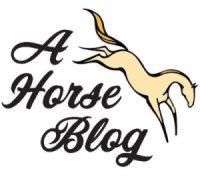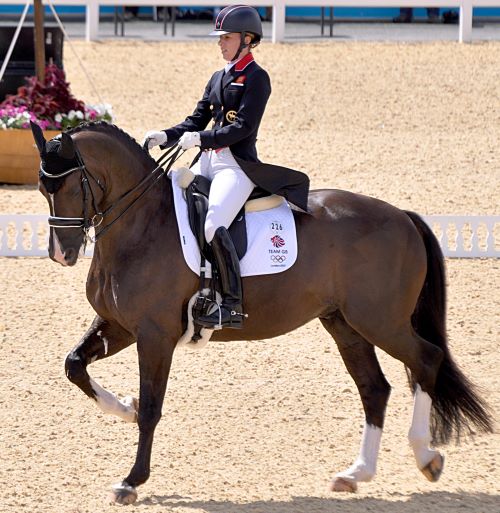Last Updated on May 2, 2024 by Teri Rehkopf
Introduction – Dressage is a Dance Between Horse and Rider
We will explore the majestic world of dressage, sometimes called “horse ballet.” Dressage is the art of training a horse to make precise movements as directed by a rider. Tracing its roots to ancient cavalry maneuvers designed for the battlefield, dressage now showcases the peak of horse training, grace, and discipline.
We will find out about the refining process that turns natural horse movements into a choreographed performance judged by a panel of experts. In dressage competitions, riders guide their horses through a series of predetermined tests, demonstrating the horse’s training, responsiveness, and harmony between horse and rider.
If you want to compete, you’ll need to understand that dressage offers many opportunities for riders of all levels. From local schooling shows to the illustrious Olympic Games, the stages for dressage vary widely. But regardless of the level, the objectives remain the same: to display precision, flexibility, balance, and overall elegance.

Before we get into the nitty-gritty details of training and preparing for your first dressage competition, it’s important to grasp the essence of this equestrian sport. When done right, dressage exudes effortlessness, but behind the scenes, it requires incredible skill and dedication from both the rider and the horse.
Preparing for Your First Dressage Competition
Ready to test your skills in the world of dressage competitions? Great, I’m here to help you prepare for this exciting journey. Dressage isn’t just about showcasing your horse’s ability to perform certain moves. It’s also about the harmony and connection between you and your trusty steed. With that in mind, let’s jump in.
Choosing the right horse is your first step. You’re going to want a horse that’s not only physically capable but also one with a temperament that matches the discipline of dressage. A responsive, attentive, and calm horse can be a significant game-changer. And remember, it isn’t about the breed but the individual horse’s aptitude for dressage.
Training is where the fun begins. Consistency is king here, and so is patience. Start with the basics of dressage training, ensuring your horse masters each level before moving on to more complex routines. This includes the walk, trot, canter, and transitions. Also, familiarity with dressage tests and understanding how scoring works will give you a leg up. Each movement is graded on a scale. Precision matters.
A secret about competition day is that your appearance counts. Dress appropriately in a riding jacket, white or tan breeches, boots, and a helmet. Tidy grooming, braiding, and the right tack are non-negotiable for your horse. It reflects your respect for the sport and the judges.

With your horse picked out, training underway, and dressage attire all set, you’re well on your way. In the next section, I’ll walk you through the do’s and don’ts of the competition itself—think of it as the ‘rules of the road’ for the dressage arena.
Navigating Dressage Competitions: Rules and Etiquette
Understandably, stepping into the arena for a dressage competition can feel intimidating. But I’m here to help you with the ins and outs of what to expect. Knowing the rules and etiquette can make all the difference in your performance and enjoyment of the event.
The rulebook isn’t just a suggestion; it’s your roadmap to success in dressage. Each competition may have its specific regulations, but familiarize yourself with the general principles upheld by governing bodies like the United States Dressage Federation (USDF) or the International Equestrian Federation (FEI). These include details on permitted equipment, attire, and Dressage movement execution guidelines.
Etiquette extends beyond the rulebook, too. It starts with respect—for your fellow riders, the judges, and the staff. Punctuality is essential in Dressage events; ensure you and your horse are ready at your assigned times. Keep a clean and organized area in the stable. Warm-up rings are shared spaces, so be mindful of your space and other riders, and remember the left-to-right passing rule.
Unexpected situations are part of the competition. A cool head and knowledge of procedures for dealing with potential hiccups, like a spooked horse or equipment malfunction, show your caliber as a competitor. Practice how you’ll calmly regroup if the unexpected happens.
Focusing on the rules and etiquette will earn you points with the judges and make the whole environment more positive for everyone involved. It will also set a solid foundation for when you’re ready to advance your competitive dressage career, which brings us to what’s next: moving up the ranks and polishing your skills for higher-level competition.
Beyond the Basics: Advancing in Dressage

Moving up the ladder in dressage is both thrilling and demanding. It’s not just about having a well-trained horse; it’s also about deepening your understanding of this elegant sport and refining your skills to new levels.
As you ascend from beginner to intermediate and then to advanced levels, the complexity of movements and the precision required increase significantly. To be successful, I’ll walk you through some strategies that can help.
Continuous learning is key to progress. The quest for knowledge never ends in the realm of dressage. Read books, watch videos of top competitors, and, if possible, attend clinics. Choose something that resonates with you—learning methods vary for everyone.
Training sessions should now include more intricate movements like flying changes, pirouettes, and half-passes. Remember, quality over quantity. Perfecting these new movements will take time and patience, but it’s a necessary step toward advanced competition.
At this point, a well-matched coach becomes invaluable. A good instructor will fine-tune your technique, help correct bad habits early, and provide guidance tailored to where you and your horse are on your journey. They’ll also assist in interpreting judges’ feedback, which is crucial for continuous improvement.
Built on a foundation of trust, the partnership with your horse is paramount. This relationship is the beating heart of dressage. As you aim for higher competition levels, pay attention to your horse’s needs, health, and well-being. A happy horse performs better, and a strong bond translates into seamless communication during performances.
And don’t forget the power of competition experience. Participating in various events gives you a flavor of what to expect as you move up. Regardless of the outcome, there’s a lot of opportunity to learn from each show.
In my opinion, advance planning is another pillar of success. Look ahead and set goals for both training and competitions. This helps create a structured timeline and keeps you and your horse on track.
Advancing in dressage is about the journey as much as the results. Your first attempt at a higher level doesn’t need to be your last. Refine, reflect, and remember to enjoy the process.
Final Thoughts and Expert Advice
Reflecting on the dressage world, you can see it’s a blend of artistry, athleticism, and intricate communication between horse and rider. It’s not just about competition; it’s also about the bond you build and the personal growth you experience along the way.
I caught up with a seasoned dressage expert, Dr. Sophia Martin, an FEI judge and former international competitor, to gain insights you won’t find just anywhere. She emphasized the importance of patience and consistency, reminding us that ‘Dressage is as much about the journey as it is the destination.’
According to Dr. Martin, one key thing to remember is that dressage is a progressive training process. ‘Choose something that resonates with you and your horse, and work at it piece by piece. And don’t worry too much about setbacks—they’re just learning opportunities in disguise.’
If you’re contemplating taking dressage to the next level, Dr. Martin suggests finding a good coach. A mentor who understands dressage from a technical standpoint and can inspire and motivate you is invaluable.
I was lucky to find a great mentor and later became a best friend in my Dressage trainer, Kathy Daly. After a few years, I called her one evening and told her I could finally feel the inside leg to the outside rein, half-halt. What a difference. When you have a half-halt, sitting the trot and making transitions is much easier.
I think every dressage rider should focus on building a foundation of trust and understanding with their horse. Your first attempt doesn’t need to be your last—there’s a lot of opportunity to learn and grow together in this sport.
I hope you’ve found this guide to dressage competitions informative and it helps you on your journey, whether you’re just starting or on the cusp of moving to the advanced levels. Remember, there’s no ‘I’ in dressage—it’s a team effort and all about the harmonious partnership you create with your equine friend.
Thanks for reading. Feel free to reach out with your questions or share your dressage stories. Your feedback is welcomed and essential for us to keep providing the practical advice and insights you’re looking for. I’d love to hear your feedback, so leave your comments below.

